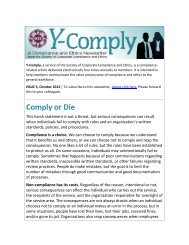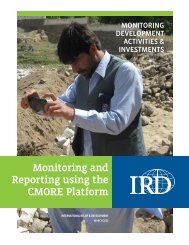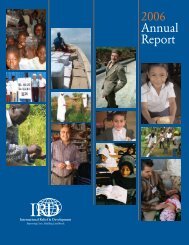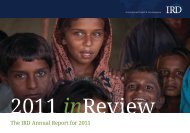Roof-Top Rainwater Harvesting Best Practices Guide - International ...
Roof-Top Rainwater Harvesting Best Practices Guide - International ...
Roof-Top Rainwater Harvesting Best Practices Guide - International ...
You also want an ePaper? Increase the reach of your titles
YUMPU automatically turns print PDFs into web optimized ePapers that Google loves.
Household Level Sub-surface <strong>Rainwater</strong><br />
Storage Tank<br />
Household Above ground Galvanized Steel<br />
Storage Tank<br />
Household storage tank in Mozambique<br />
Household storage tank in Zimbabwe<br />
Following best practices for beneficiary selection results in the adoption of the most appropriate oof-top RWH<br />
technology for the targets. In the rural context of Inhambane in Mozambique, beneficiaries opted for a local<br />
innovation, the ‘Pote’ (above left), which the program adapted for improved water supply results. This is a low<br />
cost, easy construction storage option which uses locally available inputs.<br />
In urban and peri-urban areas near Harare, Zimbabwe, feasibility studies, willingness to pay studies<br />
and cost effective initial investments into the technology informed the choice of galvanised steel tanks<br />
(above right).<br />
SPHERE standards set the average water use for<br />
drinking, cooking and personal hygiene in any<br />
household is at least 15 litres per person per day<br />
in emergency settings. 2<br />
ɇɇ<br />
Assess potential drawbacks. Working with the<br />
community, assess any potential drawbacks<br />
or conflicts that may arise in relation to rooftop<br />
RWH systems. It is also useful to draw on<br />
lessons learnt from previous experiences in<br />
the community. These experiences can be<br />
projects by the community itself or projects<br />
implemented by any other stakeholders. 3<br />
4.1.2. Technology Selection<br />
To confirm a choice of roof-top RWH technology,<br />
project proponents should consider the following<br />
questions:<br />
ɇɇ<br />
What are the existing water supply alternatives?<br />
Any historical data on water availability and<br />
quality and on the feasibility of other water<br />
supply options such as hand pumps will be<br />
useful.<br />
ɇɇ<br />
Why do they need supplementation? Is there<br />
an established demand for the alternative<br />
technology and what are the commitments for<br />
operation and maintenance?<br />
ɇɇ<br />
What are the social, economic and<br />
environmental implications of alternative water<br />
supply options? For example, considering the<br />
ability of the community to invest in roof-top<br />
RWH systems, hand pump, or any public supply<br />
options; and whether this project or alternative<br />
water supply options which the community is<br />
choosing from threaten the livelihood of any<br />
community members, such as water vendors, or<br />
centrally supplied water systems in urban areas,<br />
for example. 4<br />
ɇɇ<br />
Project proponents must share roof-top RWH<br />
technology options with the entire community.<br />
Such an exercise ensures that the project is a<br />
demand-led initiative. The community should<br />
be engaged in order to identify the technology<br />
that is most feasible and sustainable to their<br />
context.<br />
ɇɇ<br />
Each technology option should be presented<br />
on equal terms, exploring the merits and<br />
disadvantages of each. 5 This can be a costbenefit<br />
analysis of the different technology and<br />
material options.<br />
ɇɇ<br />
Project proponents must advocate for their<br />
chosen technology option. Having been<br />
presented alongside alternative technologies,<br />
social marketing including information<br />
14 <strong>Roof</strong>-<strong>Top</strong> <strong>Rainwater</strong> <strong>Harvesting</strong> <strong>Best</strong> <strong>Practices</strong> <strong>Guide</strong>



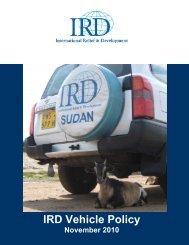
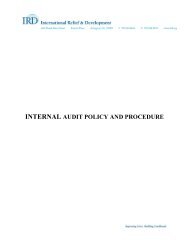
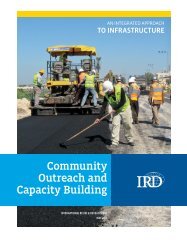
![Guide bonne pratique production d'oignon qualité_VF_4_2411012[1]](https://img.yumpu.com/23506639/1/184x260/guide-bonne-pratique-production-doignon-qualitac-vf-4-24110121.jpg?quality=85)

